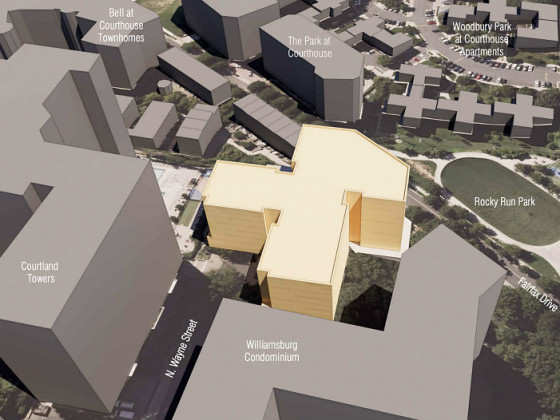 DC Renters Continue to Lease Apartments as They Deliver, But How Long Will it Last?
DC Renters Continue to Lease Apartments as They Deliver, But How Long Will it Last?
✉️ Want to forward this article? Click here.

Last fall, it seemed as though rents for Class A apartments in the District were beginning to drop. Now, that data is looking more like a blip on the screen.
The latest report from Delta Associates delves into a DC area continuing to experience above-average levels of absorption for the Class A apartment market. From March 2017 through March 2018, 10,819 units delivered in the region and 10,932 units were absorbed — and area-wide rents increased by 0.8 percent.
"This 'new normal' level of apartment absorption since 2014 has almost consistently kept annual absorption above 10,000 units," the report stated. "While job growth continues and supply remains plentiful, the wave of new Millennial households that helped the region absorb a record 13,249 apartments in calendar year 2015 appears to be slowly subsiding. We project annual demand averaging 10,000 Class A units over the next three years. Our projected average annual demand is lower than the 10,932 units absorbed in the 12-month period ending March 2018, but substantially higher than the 10-year average."
story continues below
loading...story continues above
From an absorption perspective, the last 12 months were particularly good for DC, with absorption rising 93 percent and rents increasing 1.2 percent citywide. 14,678 apartments are in the city's 36-month pipeline with the Capitol Hill/Riverfront/SW and NoMa/H Street submarkets accounting for two-thirds of the units in the pipeline.
"Given projected absorption and the delivery schedule of projects currently under construction, we expect the region-wide vacancy rate for stabilized Class A apartment properties will be 90 basis points lower in three years than it is today – 3.5%," the report stated. "Rents have thus far held up surprisingly well despite increased competition over the past couple of years, thanks to strong absorption. Rent growth for low-rise Class A product continues to outperform mid- and high- rise product. However, we expect regional Class A rent growth to remain below the long-term average over the next three years, increasing by 1.0% in 2018 and by 2.5% - 3.0% in 2019 and 2020."
Here is a quick snapshot of average rents for high-rise Class A apartments in DC area sub-markets, as defined by Delta:
- Alexandria: $2,093 per month
- Central (Penn Quarter, Logan Circle, Dupont Circle, etc.): $2,804 per month
- Upper Northwest: $2,899 per month
- Columbia Heights/Shaw: $2,657 per month
- NoMa/H Street: $2,373 per month
- Capitol Hill/Capitol Riverfront: $2,449 per month
- Rosslyn-Ballston Corridor: $2,390 per month
- Silver Spring/Wheaton: $1,925 per month
- Bethesda: $2,658 per month
- Northeast: $2,024 per month
Note: The rents are an average of studios, one and two-bedroom rental rates at Class A high-rise buildings in the DC area.
Definitions:
Class A apartments are typically large buildings built after 1991, with full amenity packages. Class B buildings are generally older buildings that have been renovated and/or have more limited amenity packages.
See other articles related to: absorption rate, class a apartments, dc area market trends, delta associates, rental rates in dc, rentals
This article originally published at http://dc.urbanturf.production.logicbrush.com/articles/blog/dc-renters-continue-to-lease-apartments-as-they-deliver/13855.
Most Popular... This Week • Last 30 Days • Ever

The number of multi-family developments on the boards in Arlington continues to grow.... read »

With frigid weather hitting the region, these tips are important for homeowners to ke... read »

A new report from DC’s Office of Revenue Analysis highlights how millennials and wo... read »

The building is the second proposal for a pair of aging office buildings in downtown ... read »

The number of neighborhoods in DC where the median home price hit or exceeded $1 mill... read »
DC Real Estate Guides
Short guides to navigating the DC-area real estate market
We've collected all our helpful guides for buying, selling and renting in and around Washington, DC in one place. Start browsing below!
First-Timer Primers
Intro guides for first-time home buyers
Unique Spaces
Awesome and unusual real estate from across the DC Metro













